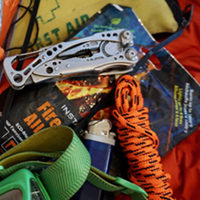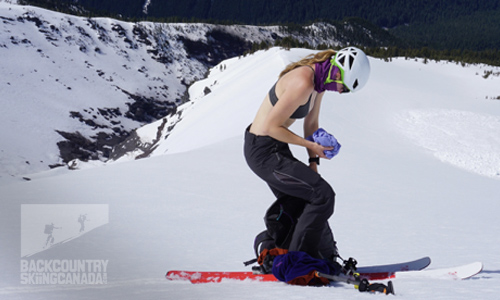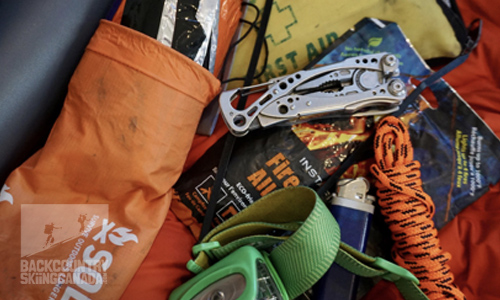


SITE LOGIN
-
REVIEWS
- Ski Gear
- Clothing
- Accessories
- Off-Season Gear
- Lifestyle
- Lodges and Accommodation
- Nutrition
- Manufacturers
- Destinations
- Training
- Gear of the Year
- Best New Summer Gear
-
Holiday Gift Guide
-
Holiday Gift Guide 2024
- Holiday Gift Guide 2024 Base Layers
- MSR Explore Revo Snowshoes
- Fieldsheer Backcountry Heated Jacket
- Fieldsheer Premium 2.0 Merino Heated Socks
- MEC Hut Booties and Slippers
- Arc’teryx Kopec GTX Shoe
- Arc’teryx Kragg Insulated Approach Shoes
- Gregory Verte 18 Backpack
- Grundens Deck-Boss Ankle Boot
- MEC Northern Light Vest
- Montec-Scope-Ski-Goggles
- Mountain Hardware Kor Airshell Hoody
- Mountain Hardware Kor Alloy Crew
- Arcade Atlas Belt
- Dynafit Ridge Dynastretch Jacket
- Shokz OpenRun Pro 2 headphones
- Buff Merino Move Multifunctional Neckwear
- Bootdoc Foot Warmer
- Cotopaxi Allpa 42L Travel Pack
- DPS LastBag
- DPS PHANTOM Glide At-Home Kit
- DPS Mission Quiver Roller
- Dragon Amped sunglasses
- Dragon DX3 Plus OTG photochromic goggle
- Fuse Lenses Anclote Flashback
- Garmin Fenix 8 Solar Sapphire Watch
- Gregory Alpaca Gear Tote 30
- Hotronic Boot Dryer
- MEC Aluminum Pot Set
- Gnara Go There Pants
- Grundens Shackleton 2.0 Duffel
- Jones Deeper 19L Backpack
- Le Bent Core Midweight Crew base layer
- Leatherman ARC
- Montane Nordes Hooded Softshell Jacket and Pants
- Helly Hansen Odin Everdown Hooded Jacket
- Helly Hansen Verglas Infinity Shell Jacket 2.0
- Montec Fawk Ski Jacket
- Pomoca Free Pro 2.0 Skins
- Rab Glaceon Pro Down Jacket
- Rab Khroma Converge GORE-TEX Ski Jacket & Pants
- Smith Squad MAG Goggles
- Stellar Guide Aerogel Hybrid Hood 2.0
- Stellar Ultralight Down Hood 2.0
- Arms of Andes Alpaca Half Zip & Wool Leggings
- Cotopaxi Allpa 70L Duffel Bag
- Giro Taggert Mips Helmet
- Loonr Hi Flyer Boots
- Paka Mountain Crew
- Roll Recovery SUPERPLUSH Classic Shoes
- Smartwool Smartloft Hooded Jacket and Pants
- Ortovox Switchback 32 Ski Touring Backpack
- Cotopaxi Allpa X 3L Hip Pack
- Giro Sagen Ski Goggle
- Icebreaker Ski+ Over the Calf Socks
- MEC-Fireside-Fleece-Snap-Pullover
- Montec Roast Mittens
- Mountain-Hardware-Sunblocker-Hoody
- MSR Titan Kettle 900 ml
- Tailgate-Industries-The Gondom-Goggle-Cover
- Wild Country Rope Tarp
- Bootdoc Race Merino PFI 50 Socks
- Remind Soles Destin Impact Insoles
- Kari Traa Rose Baselayer Half Zip Top and Pants
- Le Bent Midweight Quarter Zip
- Ombraz Dolomite Sunglasses
- Ortovox Fleece Rib Hoody
- Ortovox Merino Thermovent Base Layer
- Smartwool Intraknit Merino Tech Half Zip
- Suunto Wing Bone Conduction headphones
- Sweet Protection Adapter Mips Helmet
- Sweet Protection Connor Rig Reflect Goggles
- Zeal Optics Selkirk Glacier Glasses
- Norrona more flex1 Pants
- Norrona Octa Zip Hood
- Norrona Lyngen Alpha100 Zip Hood
- MEC Deluxe Pillow
- Holiday Gift Guide 2023
- Holiday Gift Guide 2022
- Holiday Gift Guide 2021
- Holiday Gift Guide 2020
- Holiday Gift Guide 2019
- Holiday Gift Guide 2018
- Holiday Gift Guide 2017
- Holiday Gift Guide 2016
-
Holiday Gift Guide 2024
- Pro Skier Interviews
- NEWS
- STORE
- ROUTES
- LODGING
-
VIDEOS
- 2022/23 Gear Reviews
- 2021/22 Gear Reviews
- 2020/21 Gear Reviews
- 2019/20 Gear Reviews
- 2018/19 Gear Reviews
- 2017/18 Gear Reviews
- 2016/17 Gear Reviews
- 2015/16 Gear Reviews
- 2014/15 Gear Reviews
- 2013/14 Gear Reviews
- 2012/13 Gear Reviews
- 2011/12 Gear Reviews
- 2020 Outdoor Retailer
- 2019 Outdoor Retailer
- 2018 Outdoor Retailer
- 2017 Outdoor Presscamp
- 2017 Outdoor Retailer
- 2016 Outdoor Presscamp
- 2016 Outdoor Retailer
- 2015 SIA Show
- 2014 Outdoor Retailer
- 2013 SIA Show
- 2012 Outdoor Retailer
- Tips and Tricks
- Backcountry Skiing
- SAFETY
- ABOUT
- REVIEWS
- NEWS
- STORE
- ROUTES
- LODGING
-
VIDEOS
- 2022/23 Gear Reviews
- 2021/22 Gear Reviews
- 2020/21 Gear Reviews
- 2019/20 Gear Reviews
- 2018/19 Gear Reviews
- 2017/18 Gear Reviews
- 2016/17 Gear Reviews
- 2015/16 Gear Reviews
- 2014/15 Gear Reviews
- 2013/14 Gear Reviews
- 2012/13 Gear Reviews
- 2011/12 Gear Reviews
- 2020 Outdoor Retailer
- 2019 Outdoor Retailer
- 2018 Outdoor Retailer
- 2017 Outdoor Presscamp
- 2017 Outdoor Retailer
- 2016 Outdoor Presscamp
- 2016 Outdoor Retailer
- 2015 SIA Show
- 2014 Outdoor Retailer
- 2013 SIA Show
- 2012 Outdoor Retailer
- Tips and Tricks
- Backcountry Skiing
- SAFETY
- ABOUT
TOP VIDEOS
Managing Warmth & Heat Loss
In the Backcountry
Skier 1 encountered Skiers 2 & 3 at the trailhead and invited them to ski with him along Titus Ridge. After their first lap, Skier 1 moved further up the ridge and selected another run. Skiers 2 & 3 had concerns about stability but climbed up to Skier 1 to watch him drop off a small cornice and onto a slope triggering an avalanche. Once the debris stopped moving skiers 2 & 3 heard yelling partway down the slope and safely proceeded to the victim. Skier 1 was laying partially buried and hanging onto the branches of a tree, both femurs obviously broken and a spirally rotated tib-fib fracture apparent. Skier 2 had recently completed Wilderness First Responder and was extremely competent. A level platform was dug and the patent laid out in proper alignment. Between the three skiers they had a lightweight thermarest pad, bivy, space blanket, and extra clothing including down pants and vest. A well-coordinated and difficult rescue ensued, and the patient was air-lifted to a nearby hospital shortly before 18:30 that day (full report).
The ability of the rescuers to keep the patient warm and comfortable was a crucial component of first aid and, although an extreme example, an excellent reason for carrying extra survival gear and understanding its value. Medical science has shown maintaining a normal core temperature for a trauma patient is of equal importance to other life saving measures, and the effects of hypothermia are much worse in trauma patients than in exposure victims. Responding to trauma, a likely consequence of avalanches, is not out of the realm of possibility for those who backcountry ski. Equipment failures or navigation errors are also scenarios that could impact backcountry users, resulting in a much longer than anticipated stay in cold temperatures. Keeping yourself and others warm could unexpectedly transform into a priceless skill - not only a practice of comfort.
There are three primary mechanisms of heat transfer: radiative (from the sun, or another radiating heat source such as a fire), conductive (direct contact), and convective (through air or space being heated). When you stand outside on a cold day, you lose most of your body heat through convective heat loss. This changes once you put on a down jacket, because your body begins to heat the air inside the jacket and the warm air is held closer to your skin. Your feet are also losing heat through conductive heat loss - direct contact with ice or snow. You insulate them by applying a barrier between your feet and the cold surface, such as a foam insole inside a plastic ski boot on top of a fiberglass ski. Less body heat escapes the shell of the boot and therefore your foot maintains its temperature relatively well, depending on how rapidly your blood is circulating. If you’re standing outside on a sunny day, you are likely to collect heat from the sun (just like the snowpack). Often times, the most reliable heat source is your own metabolism.
In extreme cold your blood is literally keeping your body from freezing, especially at its extremities. By circulation, the heat your muscles generate by burning ATP is redistributed throughout the body. When working aerobically, your body produces more heat than it generally needs, and therefore you sweat. This becomes a problem because liquids are notoriously efficient at transporting heat away from your skin. To put it in scientific terms, the specific heat of air is 1.005 kJ/kgK, meaning it takes 1.005 kilojoules of energy to warm 1 kilogram of air (by mass), by 1 degree Kelvin (or Celsius). The specific heat of water, on the other hand is 4.186 kJ/kgK, meaning it takes roughly four times as much energy to produce the same temperature change. Moisture next to your skin can suck heat away from your body four times as fast as air - thus it is highly important not to get excessively sweaty on the uphill.
Staying warm while moving is directly linked to staying dry, and therefore proper layering. Staying warm while stationary relies on your ability to insulate. Since your body is no longer producing excess heat, body heat must be conserved as economically as possible through preventing convective and conductive heat loss. In the case presented in the introduction, the rescuers did an incredible job of insulating the victim (the extra down clothing and the bivy) and preventing conductive heat loss (thermarest pad, bivy, space blanket), ultimately one of the skills that facilitated a successful rescue. Just laying or sitting in the snow for ten minutes can sap an incredible amount of body heat due to ground contact preventing any warmed air between your skin and the snow surface. Although barriers against conductive heat loss can be bulky, even a thin layer of reflective foil in a single use bivy will prevent some amount of conductive heat loss.
Sitting or laying on a pack or skis can provide additional insulation. Snow, as a material, is incredibly insulating if you can provide a barrier between the surface of the snow and your body. Digging a trench to escape the wind, or in extreme cases building a snow cave can provide reliable and effective means to conserve heat. If remaining one or multiple nights in the cold, finding or building a shelter is essential to increasing your chances of survival. Starting a fire can also provide warmth, dry out any wet gear, and allow you to melt drinking water. Carrying a few small items in your touring pack such as a knife, lighter and/or matches, some small diameter cord and a lightweight tarp can go a long way.
Did we miss something? Are we totally out to lunch? Let us know what you think. People like/dislike things for different reasons so chime in below and we'll get a well-rounded evaluation. You'll need to login or register before you can comment but it only takes a few seconds, then you're good to go.
Leave a Comment:
Copyright © 2023-24 Backcountry Skiing Canada. All Rights Reserved.












